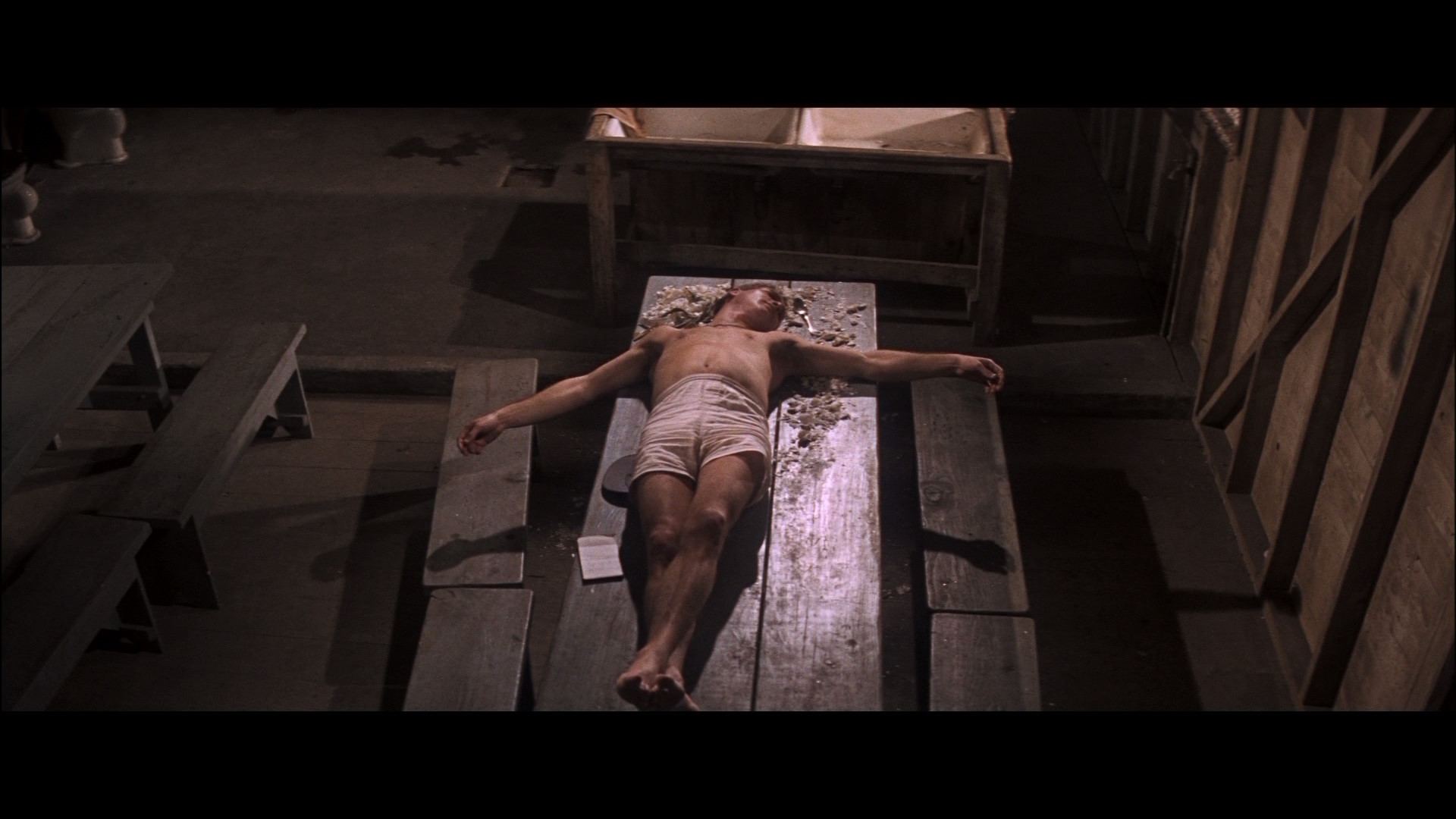This movie about a prison chain gang shows the cruel irony of life as seen from Luke, a man who ends up arrested for drunkenly cutting the heads off of parking meters. Again and again Luke proves to be a man who refuses to give up, and at multiple points the cinematography compares him to Christ. For example: when Luke eats 50 eggs for a bet and collapses afterward, he is hailed as a hero and then left on the table, nigh comatose from over-eating. His position almost exactly mirrors that of Christ on the cross: arms outstretched, legs straight with one foot over the other, and his body clothed in nothing more than a white garment to cover him. He sacrificed his dignity to give his comrades a chance to enjoy themselves for a moment in their bleak lives.
Comparisons continue when he escapes the prion for the third time, finding himself in a church in a thunderstorm. He calls for God to answer him and show him why he was made the way he was, but he gets no reply beyond the police finding his hideout. When his friend encourages him to give up, he simply refuses and accepts his fate as a man who goes against the grain. When he opens a window to face the police and calls out the famous line, "What we've got here is a failure to communicate." He's gunned down, and dies slowly for his peaceful rebellion.


